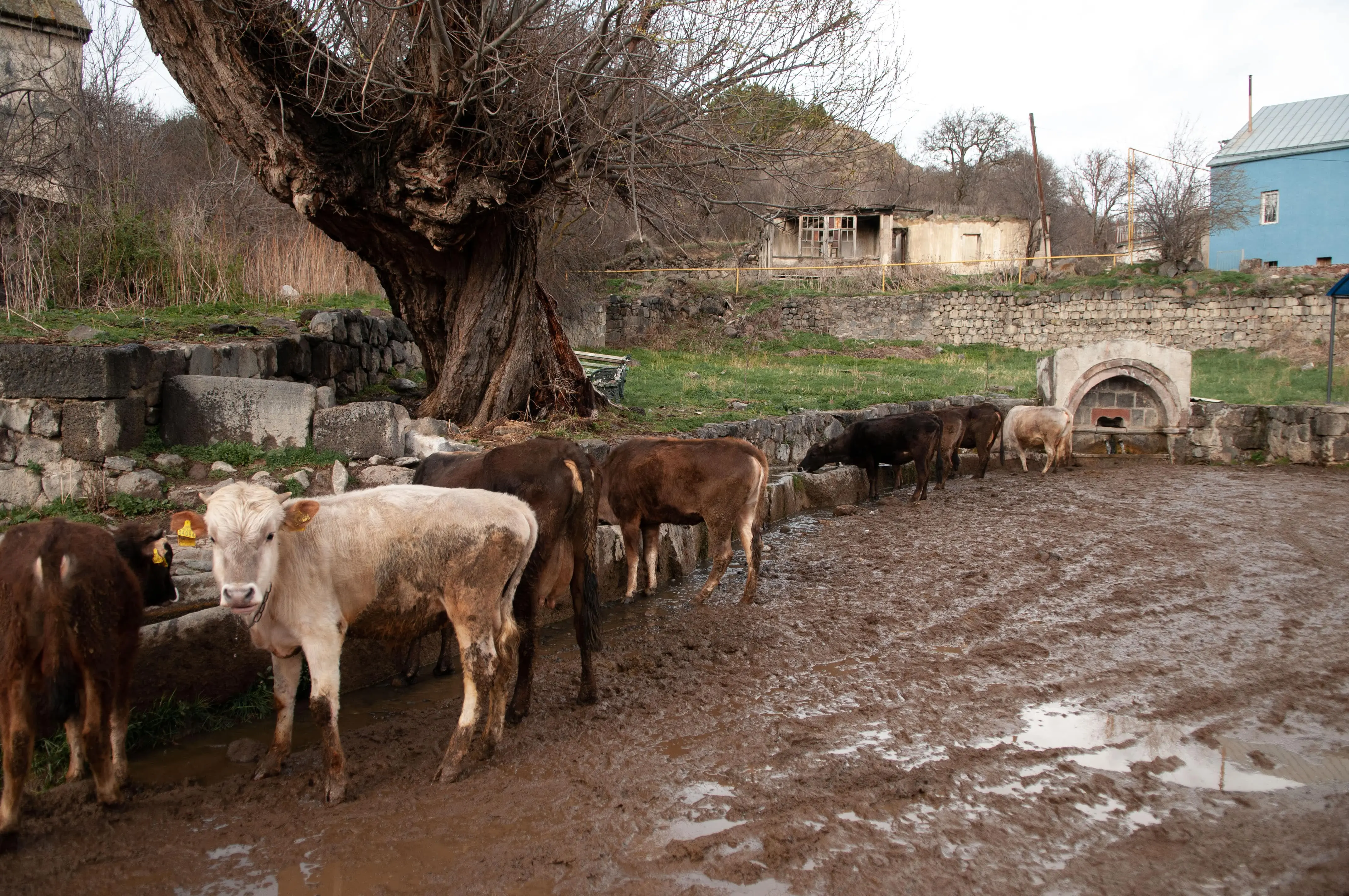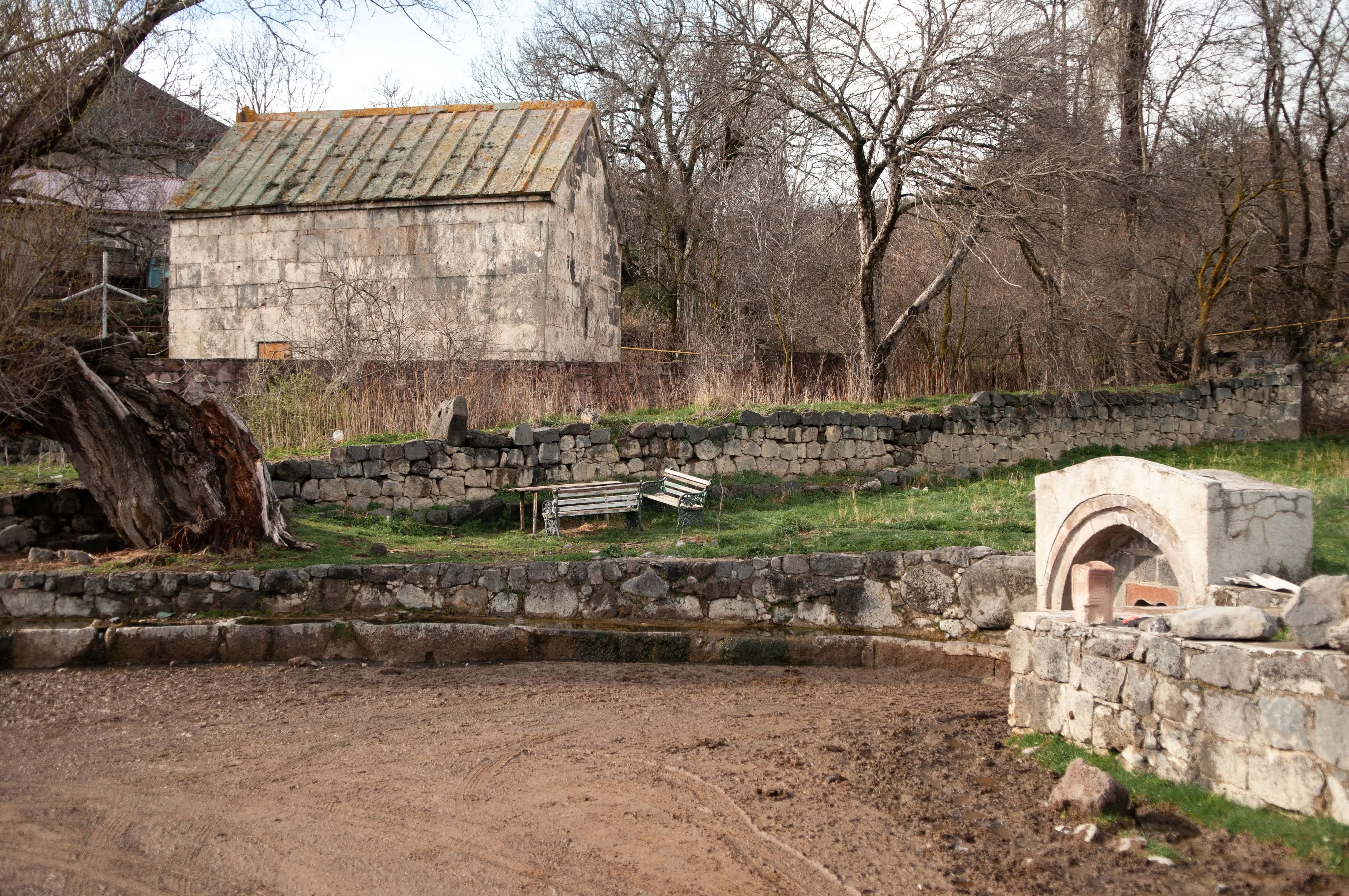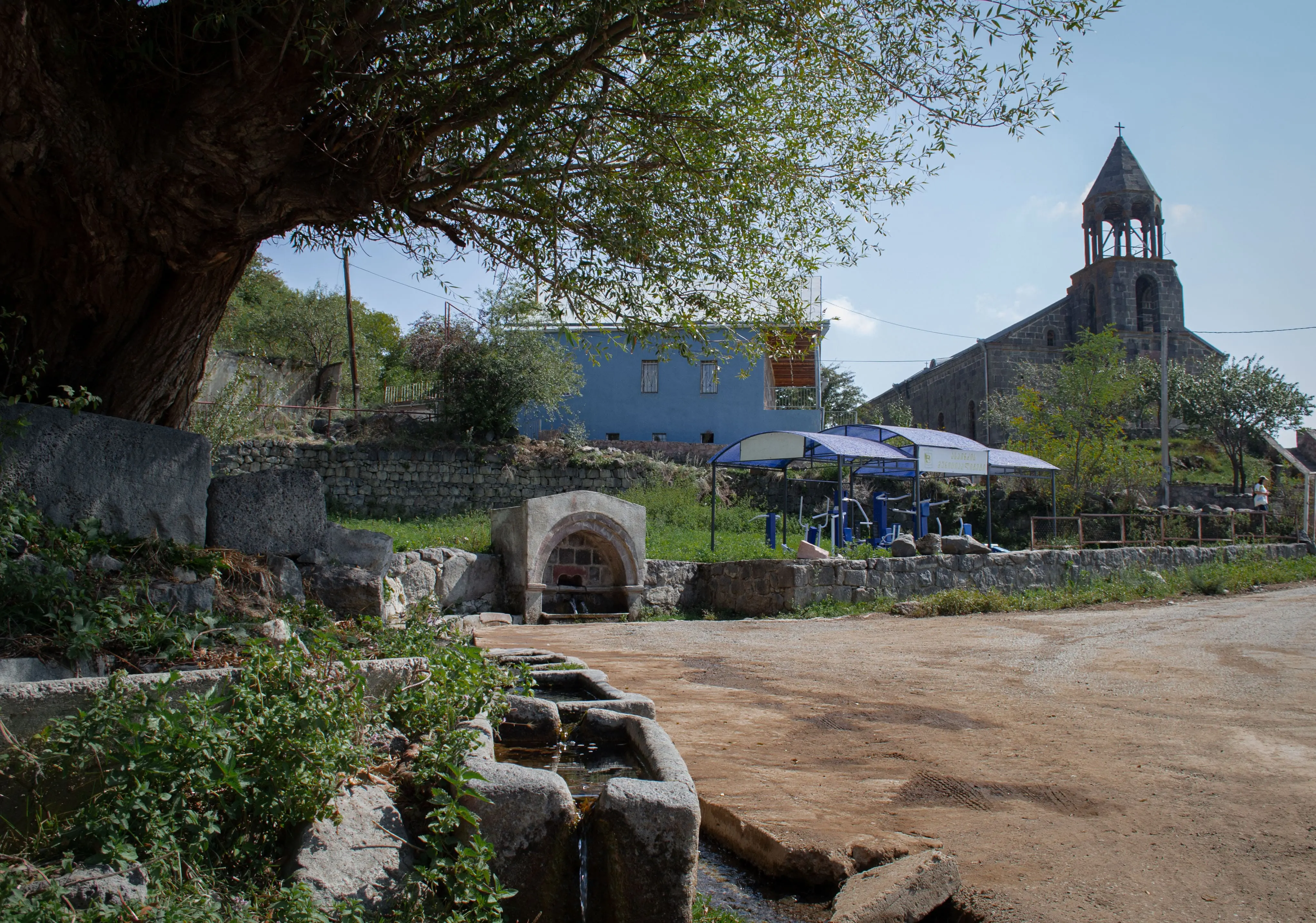The village Khizabavra was founded in the only flat, man-made area. The spot where an all-season spring emerges and where former villagers of Bavra accidentally found the people of Khiza in the wintertime and decided to unite. Over the years, the spring symbolized the unity of these people, but also acquired the religious meaning. According to the locals, the spring used to bring the golden coins, which was considered a gift from the god, bonding it with the sacred belief. People named it after twelve apostles, therefore carved the same amount of stone tanks.


